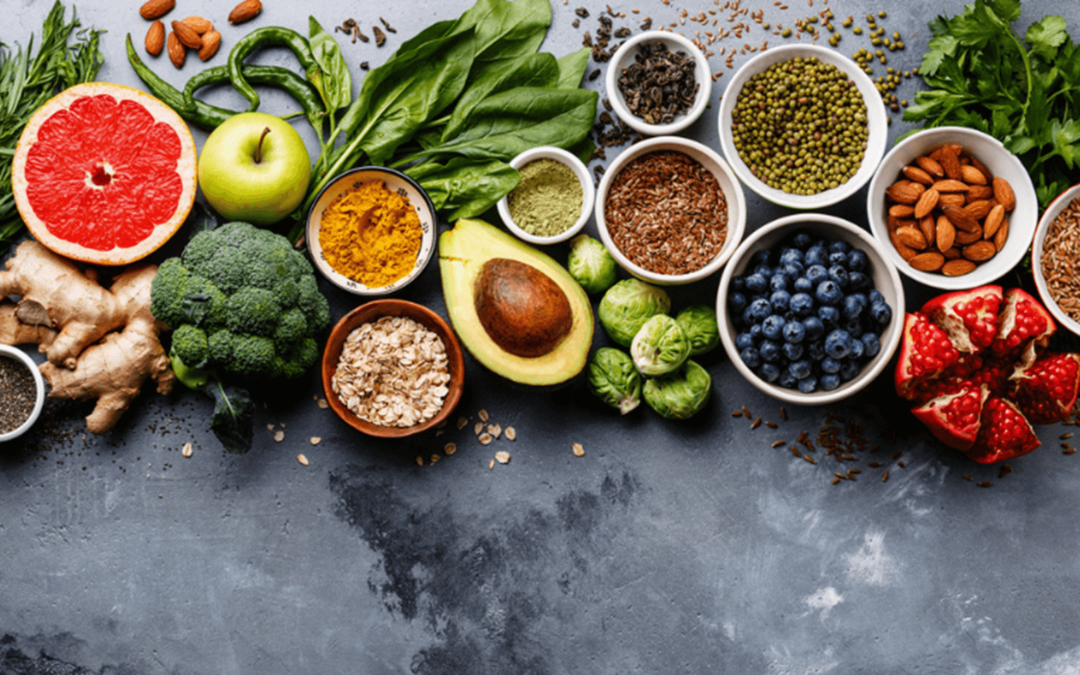The heart is like the engine of our body, constantly working to pump blood, oxygen, and nutrients to every part of us. Keeping our hearts healthy is critical to living a long and active life. One of the most important ways to care for our hearts is through diet. In today’s world, where fast food and processed meals are typical, it’s crucial to understand how our food affects our hearts.
Eating for a healthy heart isn’t just about avoiding bad foods; it’s also about choosing foods that help our hearts stay strong. By learning what foods are good for our hearts and making intelligent choices, we can protect our hearts and improve our overall well-being. This guide will break down what a heart-healthy diet looks like and offer practical tips on making your meals a powerful tool for heart health.
Critical Elements of a Heart-Healthy Diet
A heart-healthy diet is about balance, variety, and choosing nutrient-rich foods. It’s not about strict rules or giving up your favorite foods but about making intelligent choices that nourish your body and protect your heart. Here are the basics:
- Fruits and Vegetables: Natural Protectors for Your Heart
Fruits and vegetables are essential for a heart-healthy diet. They are full of vitamins, minerals, fiber, and antioxidants that help reduce the risk of heart disease. Antioxidants like vitamin C, E, and beta-carotene fight off harmful substances in the body, lowering inflammation and the chances of heart problems.
Make half of your plate of fruits and vegetables for every meal. Leafy greens like spinach, berries like blueberries, and citrus fruits like oranges are perfect for your heart. Plus, they’re low in calories, which helps you maintain a healthy weight.
- Whole Grains: Heart-Healthy Fuel
Whole grains are rich in dietary fiber, which is vital for heart health. Unlike refined grains, which lose many nutrients, whole grains keep their fiber-rich parts. This fiber helps lower cholesterol, regulate blood sugar, and improve digestion.
Include whole grains like oats, brown rice, quinoa, barley, and whole wheat products. These grains provide long-lasting energy and help prevent heart disease by managing weight and reducing the risk of diabetes.
- Lean Proteins: Strengthening Your Heart
Proteins are essential for building and repairing the body, but some proteins are better for your heart than others. Lean proteins, such as fish, chicken, beans, and legumes, give you essential nutrients without the unhealthy fats in red meat.
Fatty fish like salmon and mackerel are high in omega-3 fatty acids, reducing inflammation and heart disease risk. Plant-based proteins like beans and lentils are also significant, as they are low in fat and fiber.
- Healthy Fats: Choosing the Right Fats
Not all fats are bad. Healthy fats are an essential part of a heart-healthy diet. Unsaturated fats in foods like olive oil, avocados, nuts, and seeds help lower bad cholesterol and reduce inflammation.
However, you should limit saturated fats and trans fats found in red meat, full-fat dairy, and many processed foods, as they can increase the risk of heart disease.
- Sodium: The Hidden Danger
Too much sodium (salt) can lead to high blood pressure, which is a significant risk factor for heart disease. Most people often consume more sodium than they need without realizing it, as it’s hidden in processed and restaurant foods.
To reduce sodium, choose fresh, whole foods and use herbs and spices instead of salt to flavor your meals. Check food labels to avoid high-sodium products, and try to keep your sodium intake below 2,300 milligrams a day, or even less if you have high blood pressure.
By making these simple changes to your diet, you can support your heart health and enjoy a longer, healthier life.
Why Fiber Is Important for a Healthy Heart?
Fiber is vital to a heart-healthy diet, offering numerous benefits beyond just heart health. There are two main types of dietary fiber—soluble and insoluble—each with unique advantages.
Soluble Fiber: Lowering Cholesterol and Blood Sugar Levels
Soluble fiber dissolves in water, forming a gel-like substance in the digestive system. This gel helps reduce blood cholesterol levels by binding to cholesterol and bile acids in the intestines, preventing their absorption. Instead, these are expelled from the body, lowering the amount of cholesterol in the bloodstream and reducing the risk of heart disease.
Soluble fiber also helps regulate blood sugar levels by slowing the absorption of sugar into the bloodstream. This is especially beneficial for people with diabetes or those at risk of developing the condition. Foods rich in soluble fiber include oats, barley, beans, lentils, apples, oranges, and carrots.
Insoluble Fiber: Supporting Digestive Health and Weight Management
Insoluble fiber doesn’t directly affect cholesterol levels but plays a crucial role in digestive health. This fiber adds bulk to the stool, helping prevent constipation and promote regular bowel movements. It also makes you feel fuller, which can help with weight management—an essential factor in reducing heart disease risk.
Whole grains, nuts, seeds, and vegetables are excellent sources of insoluble fiber. By eating various fiber-rich foods, you can support your heart and digestive system.
Healthy Eating Patterns for a Strong Heart
For a heart-healthy lifestyle, the overall pattern of your diet is more important than focusing on specific foods or nutrients. Two dietary patterns, in particular, have been studied extensively and are known to be very beneficial for heart health:
The Mediterranean Diet: A Time-Tested Approach to Heart Health
The Mediterranean diet is based on the traditional eating habits of countries near the Mediterranean Sea, like Greece, Italy, and Spain. This diet emphasizes whole, minimally processed foods, including fruits, vegetables, whole grains, nuts, seeds, and legumes, focusing on healthy fats from olive oil and fish.
The Mediterranean diet is rich in antioxidants, anti-inflammatory compounds, and heart-healthy fats, making it one of the best diets for preventing heart disease. Studies show that people who follow this diet have lower rates of heart disease, stroke, and other chronic conditions, and they often live longer.
The DASH Diet: Targeting Hypertension for Heart Health
The DASH (Dietary Approaches to Stop Hypertension) diet was created to help lower blood pressure and improve heart health. This diet emphasizes fruits, vegetables, whole grains, lean proteins, and low-fat dairy products while reducing sodium, added sugars, and saturated fats.
The DASH diet has been proven to lower blood pressure, reduce cholesterol, and improve overall heart health. By following it, you can significantly lower your risk of developing high blood pressure and related heart problems.
What Foods to Avoid for Protecting Your Heart from Harm
While it’s important to include heart-healthy foods in your diet, limiting or avoiding foods that can increase your risk of heart disease is equally crucial. Here are some of the most harmful foods to watch out for:
Trans Fats: The Most Dangerous Fats for Your Heart
Trans fats are artificially created in many processed and fried foods, like baked goods, snack foods, and margarine. These fats increase bad cholesterol (LDL) and decrease good cholesterol (HDL), raising the risk of heart disease and stroke.
Even small amounts of trans fats can be harmful, so it’s best to avoid them entirely. Check food labels for partially hydrogenated oils, which indicate the presence of trans fats, and choose trans-fat-free alternatives whenever possible.
Saturated Fats: Limiting the Risk of High Cholesterol
Saturated fats, found in red meat, full-fat dairy products, and many processed foods, can raise cholesterol levels and increase the risk of heart disease. While you don’t need to eliminate saturated fats, limiting your intake and replacing them with healthier unsaturated fats when possible is essential.
Choose lean cuts of meat, opt for low-fat or fat-free dairy products, and use cooking oils high in unsaturated fats, like olive oil or canola oil, instead of butter or lard.
Added Sugars: Reducing the Risk of Obesity and Diabetes
Too much sugar is linked to several health problems, including obesity, type 2 diabetes, and heart disease. Sugary drinks, desserts, and snacks are some of the biggest culprits, but added sugars are also hidden in many processed foods, from salad dressings to pasta sauces.
To reduce sugar intake, choose whole, unprocessed foods whenever possible, and read food labels carefully to spot hidden sugars. Replace sugary drinks with water, unsweetened tea, or sparkling water, and satisfy your sweet tooth with fresh fruit instead of sugary treats.
Excessive Alcohol: Finding the Balance for Heart Health
While moderate alcohol consumption, particularly red wine, has been linked to heart health benefits, drinking too much can have the opposite effect. Excessive alcohol can lead to high blood pressure, heart failure, and stroke and contribute to weight gain and liver damage.
To protect your heart, limit alcohol to moderate levels—no more than one drink per day for women and two drinks per day for men. If you don’t drink alcohol, there’s no need to start; you can achieve the same heart health benefits through a balanced diet and regular exercise.
The Role of Portion Control and Meal Planning in Heart Health
Even when choosing healthy foods, portion control is crucial for maintaining a healthy weight and lowering the risk of heart disease. Overeating, even healthy foods, can lead to weight gain, a significant risk factor for cardiovascular problems.
- Use Smaller Plates: Studies have shown that smaller plates can help control portion sizes and prevent overeating. By filling a smaller plate, you can enjoy a satisfying meal without consuming too many calories.
- Practice Mindful Eating: Pay attention to your hunger and fullness cues, and eat slowly to give your body time to signal when you’ve had enough. Mindful eating can help prevent overeating and promote a healthier relationship with food.
- Avoid Eating Straight from the Package: When snacking or eating packaged foods, portion a serving onto a plate or bowl instead of eating directly. This helps you keep track of how much you’re eating and avoid mindless snacking.
Meal Planning for Success
Meal planning is a powerful tool to ensure you have healthy, heart-friendly meals ready, even on your busiest days. Planning meals helps you make healthier choices and avoid consuming convenience foods, often high in sodium, unhealthy fats, and added sugars.
- Plan Balanced Meals: When planning your meals, aim for a balance of fruits and vegetables, whole grains, lean proteins, and healthy fats. This ensures your diet is nutrient-rich and supports heart health.
- Prep Meals in Advance: Prepare meals and snacks in advance so you always have healthy options. This can be as simple as chopping vegetables, cooking a batch of whole grains, or packing a healthy lunch the night before.
- Keep Healthy Snacks on Hand: Stock your kitchen with healthy snacks, like fresh fruit, nuts, and yogurt, to help you avoid processed snacks and make heart-healthy choices throughout the day.
Hydration: An Often Overlooked Aspect of Heart Health
Staying hydrated is essential for overall health and vital to heart health. Water is the best choice for hydration, helping to maintain blood volume, support healthy blood flow, and ensure the proper functioning of the heart.
Tips for Staying Hydrated
- Drink Plenty of Water: Aim to drink at least 8 cups of water daily, and more if you’re active or live in a hot climate. Keep a water bottle with you throughout the day to make it easier to stay hydrated.
- Limit Sugary Drinks: Sugary drinks like soda and fruit juice can contribute to weight gain and increase the risk of heart disease. For a healthier choice, replace these drinks with water, unsweetened tea, or sparkling water.
- Monitor Your Caffeine Intake: While moderate caffeine consumption is generally safe, too much caffeine can lead to dehydration and strain the heart. Limit caffeinated beverages, like coffee and energy drinks, and balance them with plenty of water.
The Benefits of Regular Physical Activity for Heart Health
In addition to a healthy diet, regular physical activity is essential for maintaining a heart-healthy lifestyle. Exercise strengthens the heart muscle, improves blood circulation, and helps maintain a healthy weight, contributing to better heart health.
Types of Exercise for a Healthy Heart
- Aerobic Exercise: Aerobic exercise, like walking, running, swimming, or cycling, is particularly beneficial for heart health. It improves cardiovascular endurance, lowers blood pressure, and reduces the risk of heart disease. Aim for at least 150 minutes of moderate or 75 minutes of vigorous aerobic exercise each week.
- Strength Training: Strength training, like weightlifting or bodyweight exercises, helps build muscle and improve metabolism, which can aid in weight management and reduce the risk of heart disease. Include strength training exercises at least two days per week.
- Flexibility and Balance Exercises: While not directly linked to heart health, flexibility and balance exercises, like yoga or tai chi, help reduce stress, improve overall physical fitness, and support a heart-healthy lifestyle.
Making Physical Activity a Part of Your Daily Routine
- Find Activities You Enjoy: The best way to stick with an exercise routine is to choose activities you enjoy. Whether dancing, hiking, or playing a sport, find something you love and make it a regular part of your life.
- Incorporate Movement into Your Day: Look for opportunities to be active throughout the day, such as taking the stairs instead of the elevator, walking or biking to work, or taking a short walk during your lunch break.
- Set Realistic Goals: Start with small, achievable goals and gradually increase the intensity and duration of your workouts as you build your fitness level. Setting realistic goals will help you stay motivated and avoid burnout.
Achieving and maintaining a heart-healthy lifestyle is a lifelong commitment, but the rewards are well worth the effort. By making mindful choices about your diet, staying active, and prioritizing heart health, you can significantly reduce your risk of heart disease and improve your overall quality of life. Remember, it’s not about perfection—it’s about making consistent, healthy choices supporting your heart and well-being.





